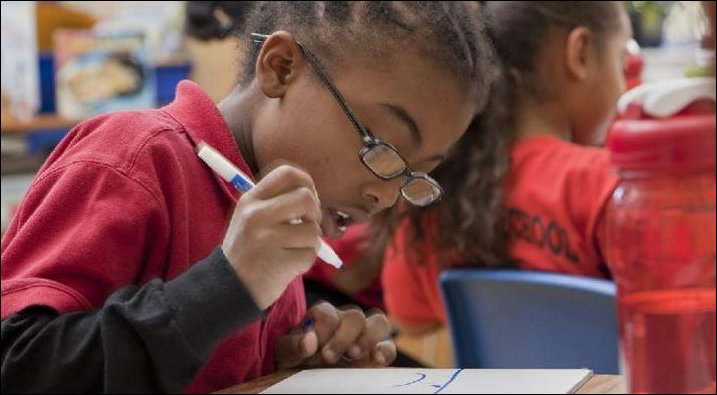
St. Andrew’s School in Richmond provides free educations to low-income students, predominantly minorities, with a boost from the Education Income Scholarship Tax Credit Program.
by James A. Bacon
When backers of the Education Improvement Scholarship Tax Credit were promoting their idea of giving philanthropists a 65% tax credit for donations to scholarship foundations, they predicted that the program would spur private-school scholarships and save the state money. Their logic was simple: For every 65 cents it lost in tax revenue, the state would save 90 cents in state aid to localities it didn’t have to pay.
But simple ideas often clash with messy reality. Among other potential complications, some recipient students might have enrolled in private school even without a scholarship. Other students might receive scholarships from more than one foundation. Now that the scholarship program has been in effect for three years, how does theory compare to actuality?
Pretty well. In 2014-2015 the tax credit helped nearly 1,400 kids from low- and moderate-income families attend private school. At the same time, it saved the Commonwealth of Virginia nearly $3 million in funding to localities. Those are the conclusions, based on actual donation, tax-credit and scholarship reports, reached in a legislative policy analysis by Christian Braunlich, past president of the Virginia State Board of Education and vice president of the Thomas Jefferson Institute for Public Policy.
Here’s what the key numbers look like:
But the Old Dominion can do better. While Virginia has raised $6 million in scholarship money through its tax credit, Florida raised $358 million to help nearly 27,000 low-income students, Georgia has raised $58 million to assist 13,000 students, and Pennsylvania has raised $100 million to benefit 38,000 students. True, all three states are more populous than Virginia, but the key differentiator is that they offer tax credits of 90% to 100%.
Hiking Virginia’s tax credit from 65% to 90% would generate an additional 3,800 scholarships in Virginia, and increase the size of the scholarships, Braunlich projects. The state still would fare no worse fiscally than if the tax credit didn’t exist. Meanwhile school districts would be able to devote the same local and federal funds to a smaller number of students.
Bacon’s bottom line: Let’s expand the tax credit. I’d be interested to hear arguments against it, but I suspect critics will sing the old refrain that helping children attend private school will hurt public schools by depriving them of resources (downright false) or “cherry picking” the best students (highly debatable and irrelevant). The underlying motive, of course, is to preserve the public school monopoly and protect the interests of all those who feed at that trough. Commitment to the educational establishment trumps the welfare of low-income children.



